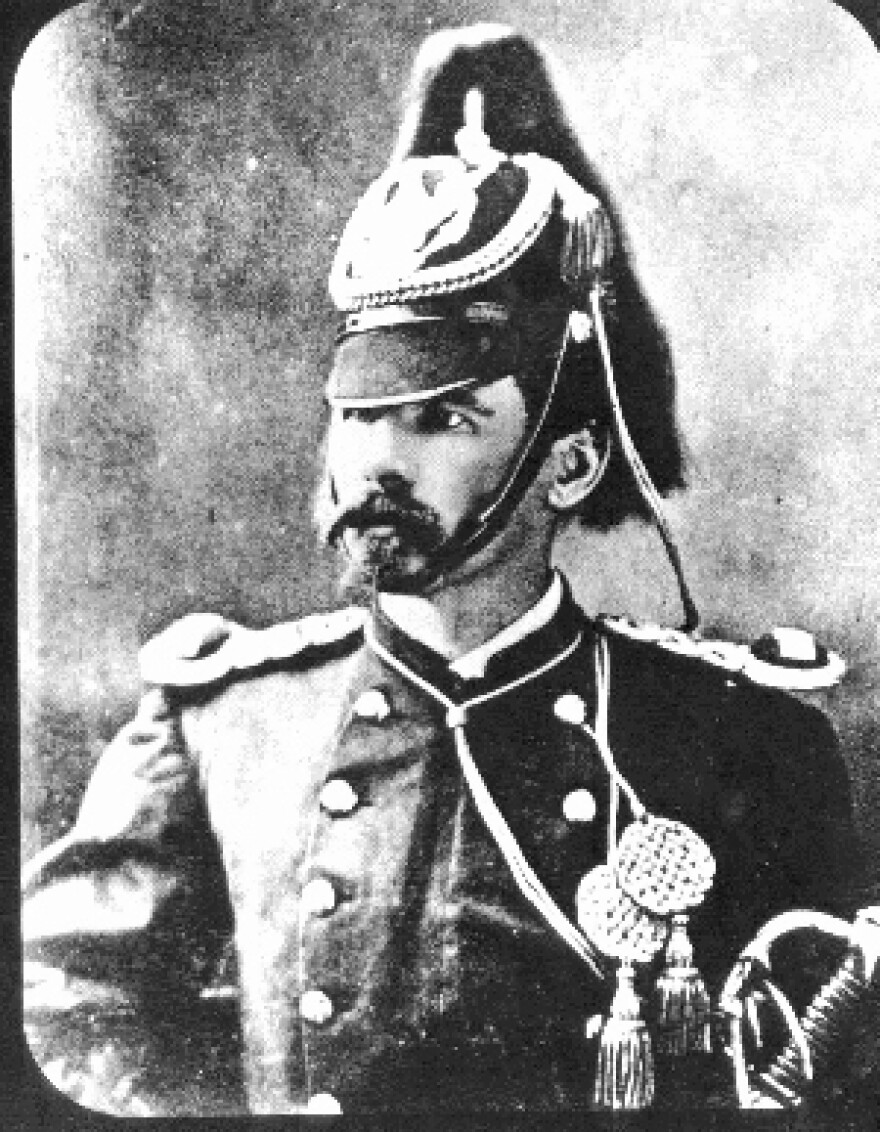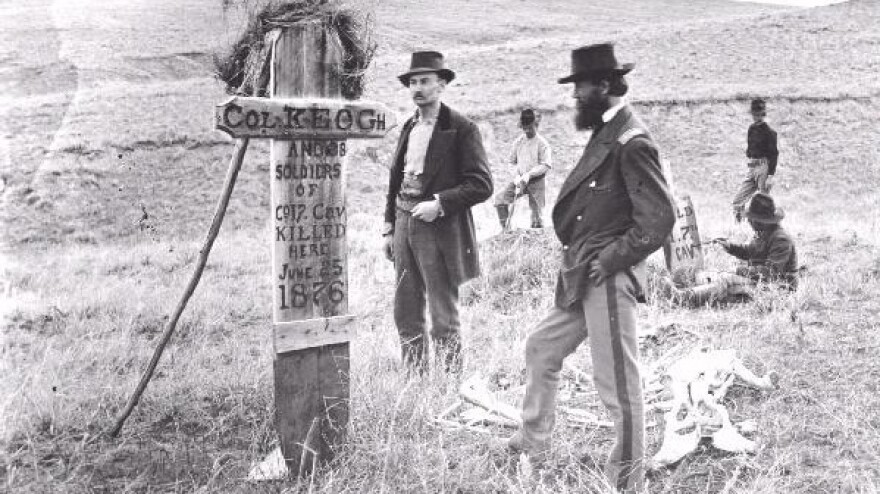John C. H. Grabill Collection, Library of Congresss Prints and Photographs division.

Image courtesy: National Park Service
One of the little known facts surrounding the “Battle at Little Big Horn” in Montana 143 years ago is that there was an Army survivor of "Custer's Last Stand." The story of the battle focused on the loss of life for General George Armstrong Custer and 225 of his soldiers in the 7th Cavalry has continued to have a place in American history, but has overlooked the story of that survivor.
The surprise for most people is that the survivor was a buckskin gelding named Comanche, a mixed-breed horse ridden by Cavalry Captain Myles Keogh.

Myles Keogh, 1872

Myles Keogh grave site, 1879.
When the remainder of the U.S. Army arrived on the battlefield several hours after the Indian attack wiped out Custer’s troops, they found the 14 year old horse, badly wounded but still living and standing over the body of Captain Keogh.

Photo: Montana Historical Society Photograph Archives, H-63
It is widely believed that the Indian warriors captured several of the 7th Cavalry horses that survived the battle, but this one horse was left in the field of battle because he had seven gunshot wounds and was thought to be close to death.
The official “keeper” of horses for the 7th Cavalry was farrier John Rivers of Company One. Sargeant Rivers inspected Comanche and determined that he would survive. While the solders were busy burying their 7th Calvary comrades, Rivers nursed the horse back to health.

Comanche at Fort Meade, Dakota Territory
Rivers took charge of the animal, assigning him to the Seventh Regiment Cavalry unit that transported him to Fort Meade, in what is now the Sturgis, South Dakota. Comanche received veterinary care and recovered from his wounds. The horse stayed at Fort Meade until 1887, when he was shipped to Fort Riley, Kansas. He remained at Fort Riley for the rest of his life.
Comanche received hero attention at Fort Riley. On April 10, 1878, “General Order Number 7" was issued, stating:
“The horse known as ‘Comanche” being the only living representative of the bloody tragedy of the Little Big Horn, June 25th, 1876, his kind treatment and comfort shall be a matter of special pride and solicitude on the part of every member of the Seventh Cavalry to the end that his life be preserved to the utmost limit..."
""Further, Company I will see that a special and comfortable stable is fitted for him and he will not be ridden by any person whatsoever, under any circumstances, nor will be put to any kind of work.”

Comanche at Fort Riley, Kansas.
On November 7, 1891, Comanche died of colic, a digestive disorder not uncommon in elderly horses. He was 29 years old. Having led nearly every parade at the fort during his time there, he became something of a celebrity and was treated with reverence and pride by every soldier.

The body of Comanche is preserved to this day at the University of Kansas having been mounted by Kansas taxidermist Lewis Dyche. Comanche is on public display in Dyche Hall.

